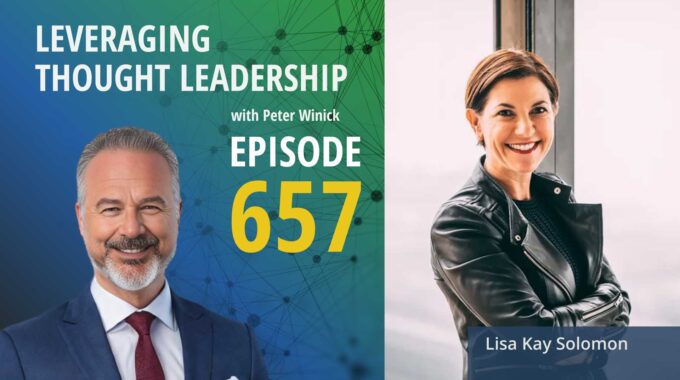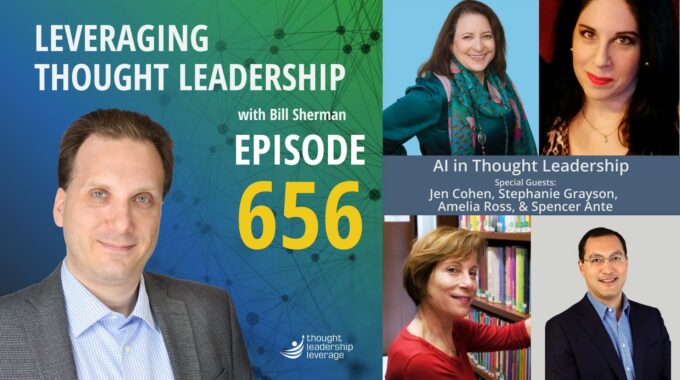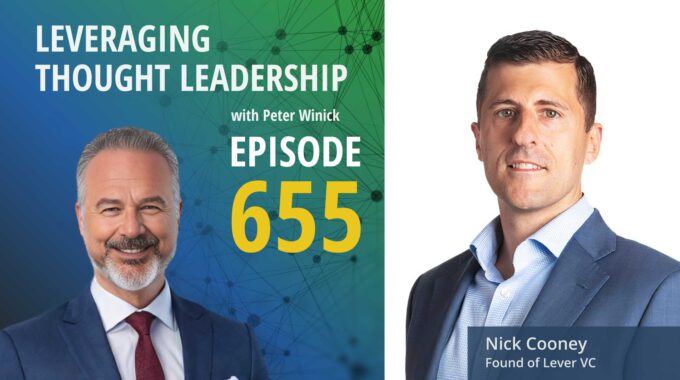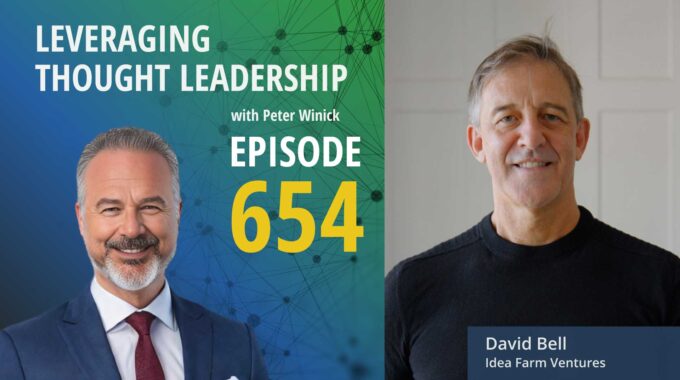How design thinking and futures literacy can transform your leadership This episode explores how leaders…
Elevating the Event Space | Kraig Kleeman
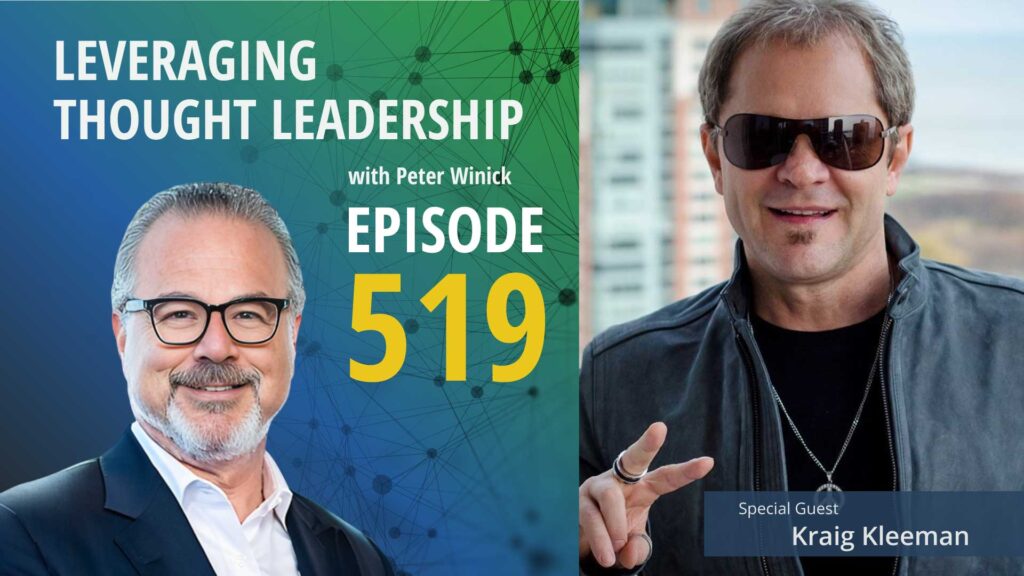
Getting a conference audience to stand up and pay attention.
An interview with Kraig Kleeman about crafting custom live performances for events and connecting with C-Suite executives.
All right thought leaders – be honest.
Have you ever nodded off a little during a presentation?
Now imagine a conference filled with rock and roll, choreographed numbers, and comedy. That’s a presentation you’d sit up and pay attention to!
Our guest today is Kraig Kleeman, the founder and Executive Producer for Rock the C-Suite a production company that brings electrifying original and relevant musical performances to corporate events. In addition, he is the author of The Must-React System: User’s Guide to Prospecting C-Suite Executives which provides a strategy for winning meetings with senior executives.
Kraig shares where the inspiration for Rock the C-Suite came from and how corporate messaging is better received through the performing arts. He describes the high energy performances he produces that can be the main stage of a conference delivering an audience-focused show that provides researched topics that mean the most to those putting on the event.
Before Kraig was rocking the stage, he had authored The Must-React System, and he explains why when doing outreach leading with value proposition and product benefit language might seem intuitive it actually isn’t the most effective method. In fact, providing fact-based briefings combined with smart questions can allow the potential client to map your research to their own experiences and advance you to the next step!
Kraig provides great advice for landing meetings with executives and creating high-octane events that any company can take advantage of.
Three Key Takeaways:
- Conference producers should prioritize the well-being of the audience over the distribution of information. If the audience has zoned out, they will not take in the information.
- When crafting content for a conference make sure to collaborate with the event owner to really dial in a deliverable that is effective for them and their audience.
- Cold call outreach to executives will have greater success if you lead with fact-based research and not value propositions.
If you need a strategy to bring your thought leadership to market, Thought Leadership Leverage can assist you! Contact us for more information. In addition, we can help you implement marketing, research, and sales. Let us help you so you can devote yourself to what you do best.

Transcript
Peter Winick And welcome, welcome, welcome. This is Peter Winick, I’m the founder and CEO at Thought Leadership Leverage and you’re joining us on the podcast today, which is Leveraging Thought Leadership. It is going to be a fun episode. My guest today is Kraig Kleeman. He’s a highly successful entrepreneur, an author and a showrunner. Pretty eclectic. So his success started in high school when he was part of the speech team. Today, he’s a showrunner for large scale events, and he’s even shared a stage with former President George W Bush and Prime Minister Tony Blair. And he’s the mastermind behind the must React system, the go to guide for C-suite prospecting. But what we’re going to focus a little bit on today is this Rock the C-suite. So, he is a thought leader and his modality, if you will, is creating customized rock and roll lyrics for organizations, which is really, I think, a really cool output of thought leadership that quite frankly, I haven’t seen before. So really? Welcome aboard, Kraig. How are you?
Kraig Kleeman Hey, I’m doing great. I’m glad to be here and thank you kindly for having me today.
Peter Winick Yes. So let’s first talk about because there are lots of folks out there that are keynoter. Is there are a fair number of folks out there. The keynote is that integrate creativity, music, art, jazz, singing, you know, the arts, if you will, into, you know, juggling. I’ve seen, you know, into what they do, but haven’t seen somebody that does what you do to kind of study an organization and then come up with these customized rock and roll lyrics to deliver. So first, let’s start with how did how did that idea happen? What was the apple that hit you on the head?
Kraig Kleeman You know, I guess I have been you know, sometimes I describe myself as the world’s greatest music listener. I spend a lot of time with music, and I grew up with classic rock and roll and have been involved in theater and in the performing arts all throughout my life. And even though much of my life, you know, in the professional world has become business, having written books and I’ve done consulting and advisory work, etc., I also own an offshore team, you know, that does write outsourcing work, all of that. But in all of my twists and turns, I’ve never, ever departed from the performing arts. And I began kind of almost always naturally to perceive that messaging. Corporate messaging, believe it or not, was better received through performing arts than through sterile overloads of e-books and data and information, etc. And I think I began to kind of intuitively understand that. Particularly conference producers. Whether that’s an association or whether that’s an in-house big sales kickoff that the producers were prioritizing distribution of information over the well-being of the audience.
Peter Winick And they assumed that the way the audience wants to hear it, because it’s the way we’ve always done it, is more expert gets up in front of a room, does their thing, delivers the information in a traditional. Here’s some PowerPoints. Let me show you this. Whether that’s the business results or the outside expert that they bring in or whatever the case may be. Right.
Kraig Kleeman You’re exactly right. In fact, there’s been this sort of template that is like keynote, keynote, keynote, breakout, lunch, breakout session keynote. Network. Wrap it up. You know.
Peter Winick Don’t forget cocktails.
Kraig Kleeman Yes, of course. You know, in fact, that’s the thing that our research shows that people want the most and or at least get the highest marks. And that’s because they like the interactivity and the interaction that comes with it. So really what we’ve done is we’ve tried to just, you know, challenge that thought and kind of just say, hey, you know, careful guys, you know, those who cling to past predictions just might be forfeiting goodness that could be theirs. And we then began to rap study group understand their messaging. I’ve got a group of studio musicians, choreographer. You’ve got a great choreographer on stage dance. We integrate improv comedy. So, we put together day to day of three hour shows that’s totally focused on the audience at every stage of lyric concept, etc.
Peter Winick So this so we’re this is really fascinating to me is anytime you take two disciplines and sort of smash the atoms together, because to me it sounds like there’s a consulting front end to this. You have to ask questions, you have to go through data, you have to research qualitative, quantitative to actually find out what is this company about, what is their culture about, what are their struggles, where do they challenged with whatever? And it’s not what the typical keynoter does, which is, ooh, do they use customer or client? Right. Is it professional services or retailer or whatever? So you put on your consulting hat on the front end to get all this input. And one deliverable might have been some sort of a consulting report, but your deliverable is this performance. So how do you give me a sense of how you get the input and then what you go through to create the outcome or the output?
Kraig Kleeman You know, that’s a great question, and I will tell you that I think at this stage of my life, it’s much easier for me than would have been, let’s say, ten years ago or certainly 20 years ago, because having attended a lot of conference and conferences, having worked with a variety of different companies, you know, a lot of it is just doing some great searching, keyword searching, understanding the topics that are trending for a particular audience, doing some of the basic work, the same kind of work that we would do almost for Google ad campaign, you know, in many ways. And then, of course, the most important thing is to take that those findings of that research and then have a 30 or 40 minute conference call with the stakeholders of the organization for which we’re doing the performance. And then we just say, So here are some of our ideas. How does this map with you? And they’ll weigh in on that. And what will happen is, you know, most of the time we will have nailed it 75% or so. And then but we’ll need that collaboration to get that additional 25% to deliver them the deliverable that’s going to be effective for them and their audience.
Peter Winick So now let me ask you this. So, this is really creative. It’s really innovative, right, as an approach, as a as a product, as an offering, as a way to highlight some form of thought leadership. So that’s good. What might be a challenge on the other side of this is there’s probably not anyone out there in a meeting today planning the next conference thing, and we need somebody to do exactly what you just explained. You know, get me that. Now they are having dozens, hundreds of meetings today saying, and we need a keynote or oh, maybe someone on an innovation, oh, maybe someone on creativity, maybe someone on leadership. Oh, I just read this person’s book. Right. So how do you sort of square that circle?
Kraig Kleeman That’s a great, great question. And the truth is we have to square that circle to be able to bring this to the marketplace as robustly as we’d like to. And so, what the C-suite has spawned another service that I just simply called Kraig Kleeman like. And what really Greg Kleeman live is, is rather than bringing the band here, a lot of folks have said to me, girls could love this, but a professional band, a professional improv team is just more than we planned for and more than we budgeted for. Right. With Kraig in my life, then I offer the service where I can emcee an event, or if someone else sees it, I can still do what makes it special, which is bring energy Bubs. And Bob is a 3-to-5-minute little performance that I do in between keynotes with, you know, loud roaring rock music, getting the people up dancing, including sometimes an inspirational soliloquy. Some of the energy bumps. We celebrate birthdays, you know, we just make it very, very fun. And what it does is that it accomplishes a similar purpose. It eliminates the snooze best sort of element of coverages. It brings live, it brings immersion, and it helps bring a vibe that will be memorable forever for those who participated.
Peter Winick Got it. Got it. So I like the idea of that sort of short form little shot of espresso to hit them with throughout the day. And I’m assuming that is thematic and connected to, you know, they’re not just a bunch of random Lego pieces that you’re throwing in, correct?
Kraig Kleeman Oh, no, absolutely. We create, in effect, or the equivalent of a run of show outline for each of the 3-to-5-minute bursts. And actually, in many instances, we can even add choreography if we’re in an area, for example, like Vegas. That’s easy for me to work with a dance team, quite frankly, all in advance, virtually, and then really show up and it go off beautifully. So you can even do that at a low cost. That’s always a low cost. What I mean, as a cause that’s typical for a keynote or, you know, for a keynote speaker, but bring, you know, bring the music or exotically bring the energy and even bring on stage dancing where appropriate.
Peter Winick Got it. If you’re enjoying this episode of Leveraging Thought Leadership, please make sure to subscribe. If you’d like to help spread the word about our podcast, please leave a five-star review at ratethispodcast.com/ltl and share it with your friends. We’re available on Apple Podcasts and on all major listening apps as well as that thought leadership leverage.com/podcast.
Peter Winick So let’s switch a little bit and talk about your journey as an author. Right. So how many books you have under your belt at this stage?
Kraig Kleeman I published two. I’ve got four more on my hard drive that I just haven’t quite, you know, been able to finish either through the demands of work or just sometimes you get creative drought or, you know, when you write books and music for that matter. But no. But my first book I’m real proud of called The Must React System, which is a guide for outreach and cold calling and includes templates for email outreach and multi-touch campaigns all oriented to win meetings with senior executives by leading with fact-based research versus leading with value proposition language. Now, I should say that book, I’m very well.
Peter Winick Stay there a minute for it, but I’m sorry for a minute because. You know, leading with fact based. Right. So, this is all about knowing your audience, right? If you’re trying to convince senior leadership, senior execs, it can’t be because you say so or you believe so or only mission, vision values. And I think a lot of people are shy, I would say shy away, but they want to either be in the mission vision value camp or the data camp. And in essence, what you’re saying is you need both.
Kraig Kleeman Thank you for that. And you know, Pete, I appreciate it is a topic very dear to me. And I’ve consulted with hundreds of companies on just this. And what I’ve found is that companies in their messaging, their outreach messaging to when meetings often lead with value proposition and product benefit language. And while that language seems intuitive, it’s really the counterintuitive language that’s far more effective. And so, you know, to give you an example, we worked with a company that was selling that it read my blog and contacted me, wanted me to help them. And they were selling a product that a very, very expensive software product that they were selling to the global 2000 companies to really optimize their accounts payable process, automated optimize that they can drive the costs, the process in order down from an average of north of $6 to a dollar, $1 $14.50 per invoice through enabling automation and best practices. When I first met them, they would call, you know, CFOs and SVP controllers and they would just give the classic, Hey, I’d like to introduce you to X Company and our product and share with you how we saved, you know, ABC Company $1 million last year and they couldn’t win any meetings that way. But when we began to teach them how to lead with research and invite CBOs to attend an analyst briefing when the topic was trends driving world class finance organizations. And when we taught them how to deliver a fact-based research briefing that was as effective as if a Gartner Group or McKinsey consultant or BCG delivered it. And then when we taught them the power of asking questions and discovery through mapping, it was research. In other words, the research says this. I’m just curious, what is your experience? Then in about 20 minutes. They could qualify a $3 million opportunity and begin to advance next step meetings on their journey to win that meeting. So, you know, when I talk about leaving with fact-based research, that’s kind of a short thumbnail version of what the model will emphasize.
Peter Winick Love it. Love it. So, as we start to. Wrap up here. What thoughts or advice either do more of this or don’t do this? Would you have for folks that are out there that are maybe where you might have been five or ten years ago relative to their thought leadership in their journey?
Kraig Kleeman It’s a great question. There are so many different things that I may be able to say, but one of them would be understanding and embracing the power of quiet time. And what I mean by that was and I, you know, in some ways I think the pandemic and the lockdowns helped me reframe my lenses on this topic where there was a time for many years, maybe even decades, where I was immersed, almost buried in notifications and emails and all the digital communications that comes at us due to the vast global commercialization of the Internet that I had forgotten how to clock out. And about four years ago, I made a profound commitment to health, fitness and other things that contributed. And I began to realize that I needed quiet time. And as I began to commit literally two, three, 4 hours a day, you know, four or five days a week, I had no idea that my ability to think clearly, to create strategy, to begin to undo, I mean, you know, the new workforce was my outsource company was created from that quiet time of reflection. And I think what I would just share is that even though one has to be intentional to do it, the benefits of unplugging and almost walling off some guardrails around some serious business quiet time can lead to some exceptional outcomes.
Peter Winick And I think that’s wonderful advice because we’re all really busy. And as a thought leader, you know, one of your primary objectives is to create more thought leadership. And you can’t just throw in your calendar, you know, 3:00 on Tuesday, come up with Epiphany, right? That doesn’t work. Right? So, you have to create the environment and the space and the time, which appears to be unscheduled and, quote, unproductive to get you to that productivity. So, it’s a little against the grain there. Well, it’s been great. Kraig, I appreciate you coming on. I appreciate you sharing your story with us. Great stuff here. Thank you so much.
Kraig Kleeman Thank you, Peter. It’s a pleasure. Thank you.
Peter Winick To learn more about Thought Leadership Leverage, please visit our Web site at ThoughtLeadershipLeverage.com to reach me directly. Feel free to email me at Peter at ThoughtLeadershipLeverage.com and please subscribe to Leveraging Thought Leadership on iTunes or your favorite podcast app to get your weekly episode automatically.


